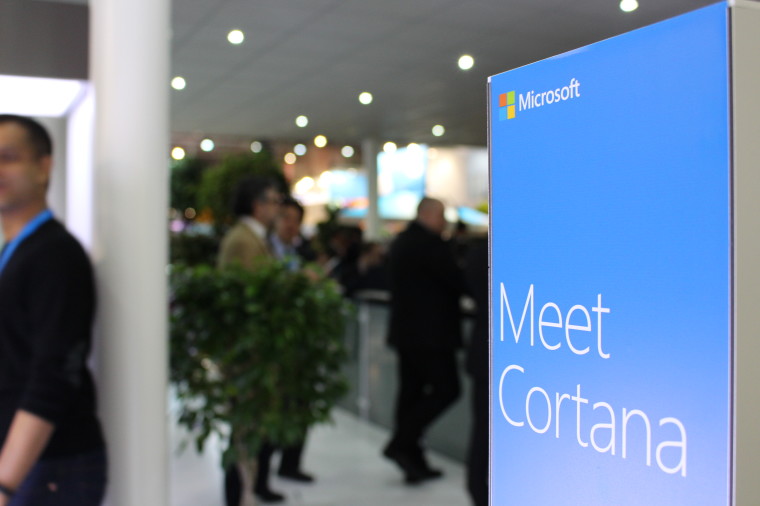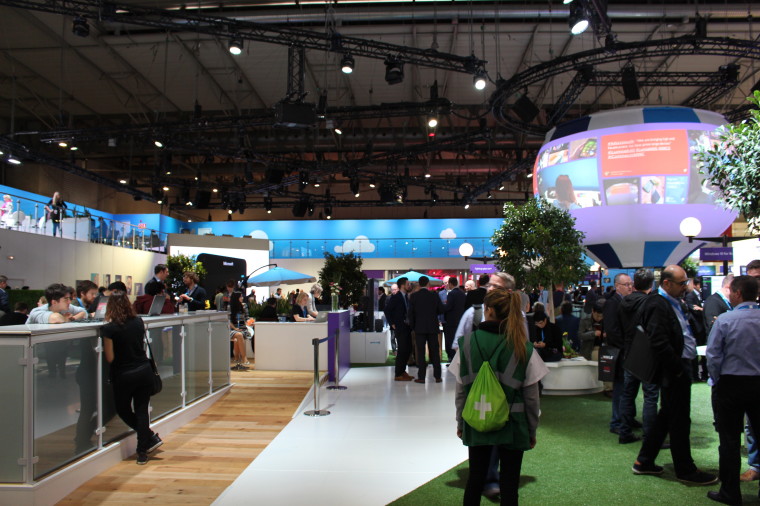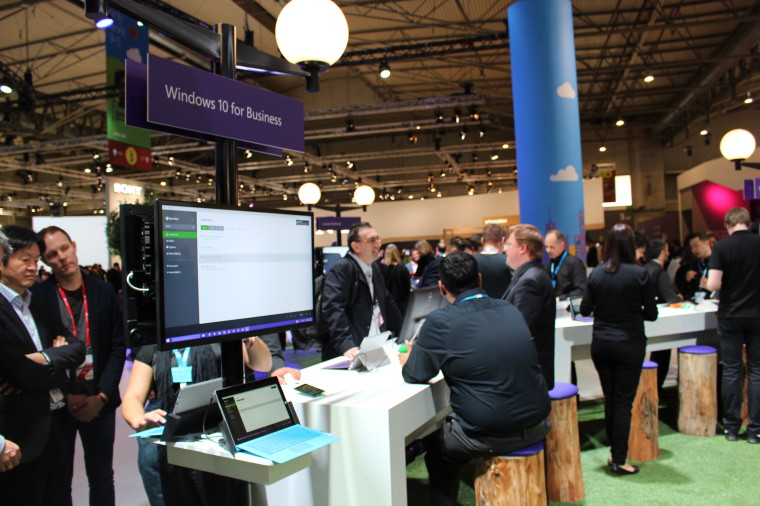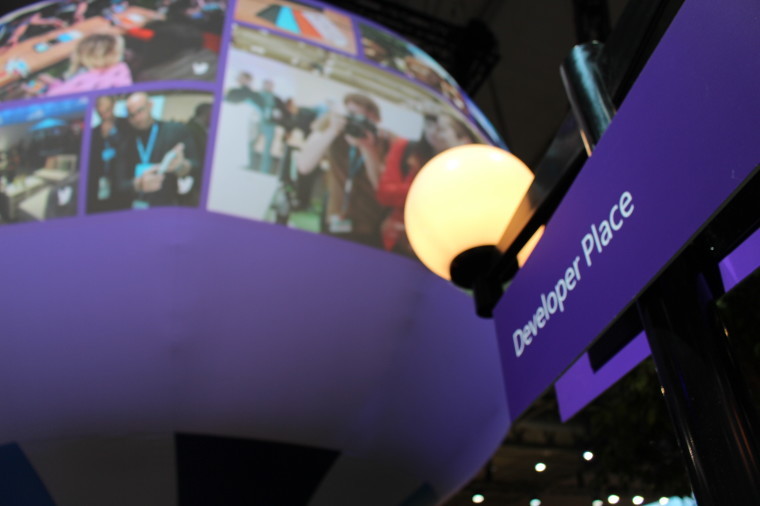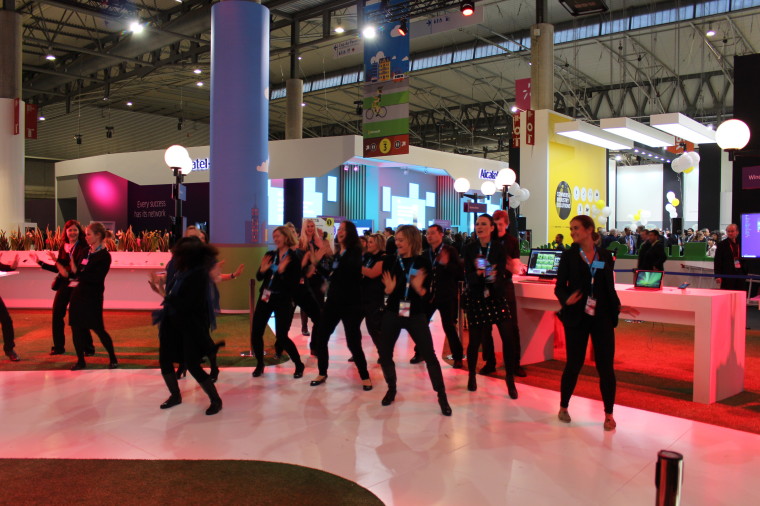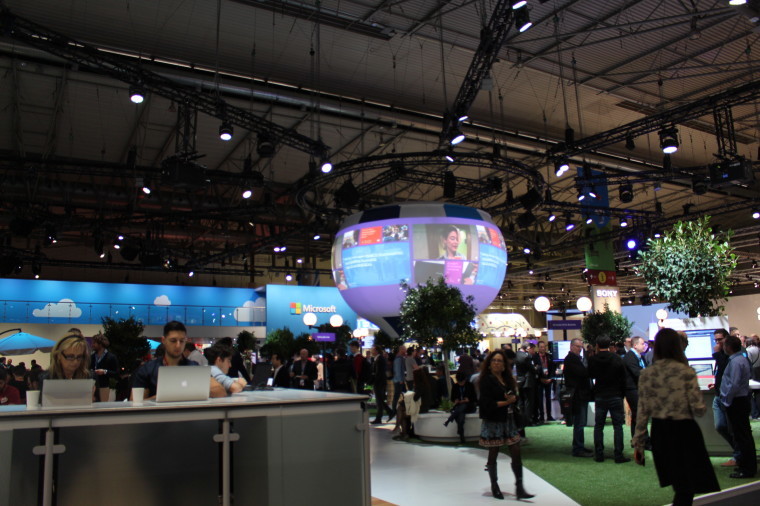A laptop computer featuring Windows 10 is seen on display at Microsoft Build in San Francisco in April. Even people who haven't indicated they want Windows 10 may be getting it downloaded to their computer, Microsoft confirmed. (Robert Galbraith/Reuters)
Microsoft is downloading large Windows 10 installation files to Windows 7 and 8.1 computers even if users didn't indicate they're interested in upgrade, gobbling up internet bandwidth and hard drive space.
Microsoft has been pushing Windows 7 and 8 users to reserve a free upgrade of Windows 10.
But some people who haven't officially reserved an upgrade and indicated they want Windows 10 are still getting Windows 10 downloaded to their computer, Microsoft confirmed.
In an email to CBC News, Microsoft confirmed that "we may help customers prepare their devices for Windows 10 by downloading the files necessary for future installation" if they fall into one of two groups:
Microsoft has been pushing Windows 7 and 8 users to reserve a free upgrade of Windows 10.
But some people who haven't officially reserved an upgrade and indicated they want Windows 10 are still getting Windows 10 downloaded to their computer, Microsoft confirmed.
In an email to CBC News, Microsoft confirmed that "we may help customers prepare their devices for Windows 10 by downloading the files necessary for future installation" if they fall into one of two groups:
- Those who have chosen to reserve their upgrade of Windows 10.
- Those that have Windows Update automatic updates enabled.
"This results in a smoother upgrade experience and ensures the customer's device has the latest software," Microsoft added.
Most users have automatic updates enabled because it's the default setting and the one recommended by Microsoft in order to make sure your computer is protected by the latest security patches.
The company said the installation file is approximately 3GB, although some users on technology websites have reported a downloaded Windows file in the 6 GB range.
Removal with Disk Cleanup:
Microsoft says Windows Update checks if there is "sufficient" free disk space before downloading this or any other update. Users who want to remove the files to free up extra hard drive space can use the Windows Disk Cleanup utility and upgrade later, it suggests.
To prevent the download, users can change their Windows Update settings. For example, they can opt to receive notifications before downloading updates.
Many technology watchers have criticized the huge size, covert nature, and lack of user consent for this download.
Most users have automatic updates enabled because it's the default setting and the one recommended by Microsoft in order to make sure your computer is protected by the latest security patches.
The company said the installation file is approximately 3GB, although some users on technology websites have reported a downloaded Windows file in the 6 GB range.
Removal with Disk Cleanup:
Microsoft says Windows Update checks if there is "sufficient" free disk space before downloading this or any other update. Users who want to remove the files to free up extra hard drive space can use the Windows Disk Cleanup utility and upgrade later, it suggests.
To prevent the download, users can change their Windows Update settings. For example, they can opt to receive notifications before downloading updates.
Many technology watchers have criticized the huge size, covert nature, and lack of user consent for this download.
Many technology watchers have criticized the huge size, covert nature, and lack of user consent for this download.
"If you didn't reserve a copy and it just goes ahead and downloads it anyway, it's going directly against your wishes," wrote Chris Merriman in the Inquirer Tuesday
"And let's remember, it's going into a hidden folder that you actually have to change settings to be able to see. That says a lot."
To see whether your computer has already downloaded Windows 10, change your settings in Windows Explorer so you can view hidden files and look for something named $Windows.~BT and can be found by changing your settings in Windows Explorer so you can view hidden folders and looking in the root directory for the drive where Windows is installed.
Overage charges possible:
Many critics are upset because the download uses up valuable hard drive space and could potentially cost users if it pushes them over the download limits for their internet service — overage charges in Canada can be as high as $3 per gigabyte over the limit. The download can also cause internet sluggishness while it is happening.
When Apple similarly forced all its devices to download a new U2 album, Songs of Innocence, last September — also for free — the public outcry prompted Apple to release a special tool to remove the unwanted files.
While Windows 10 doesn't install automatically, it has eroded public trust in Microsoft, suggests Woody Leonhard, senior contributing editor for the technology website Infoworld.
"I have no idea what the people at Microsoft thought they were accomplishing," he wrote, "but that Redmond reality distortion field has done some serious damage to the company's credibility."





































